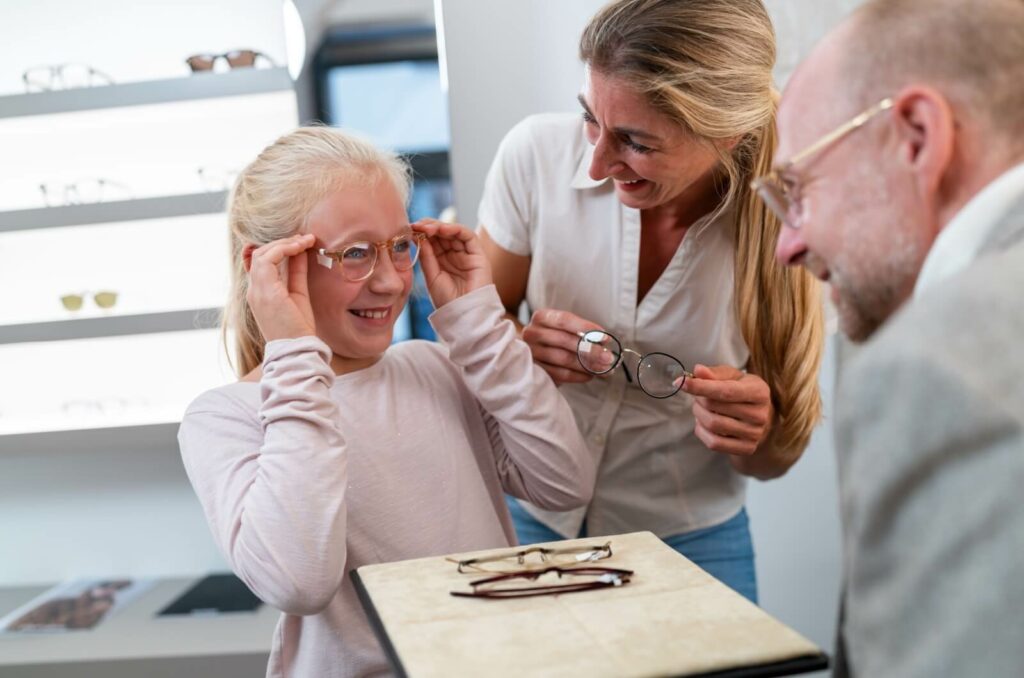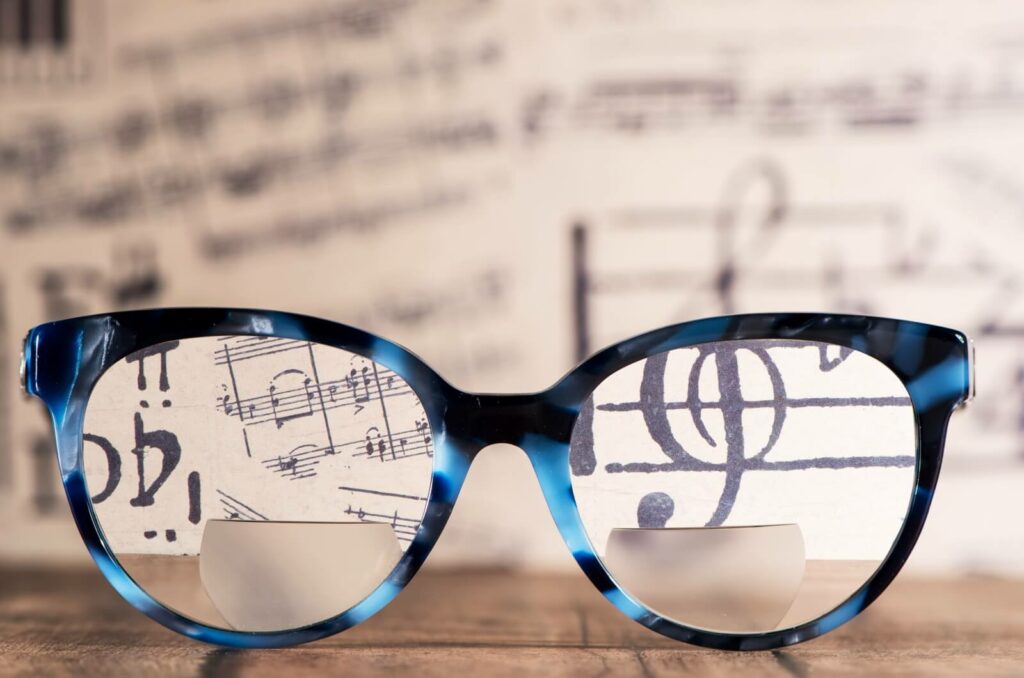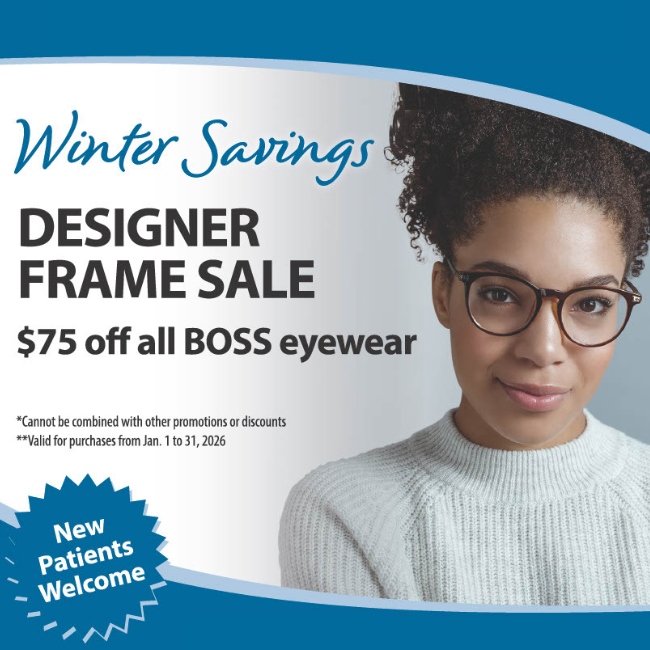Bifocal eyeglasses are one of the most common forms of vision correction. These glasses are designed to provide clear vision at two different distances, allowing the wearer to see both near and far objects clearly.
Bifocal eyeglasses have a distinct visual marker—a line or rectangle marked on the bottom half of the lenses. Their multifunctional use makes them suitable for individuals who:
- Require presbyopia correction.
- Frequently shift focus between near and far distances.
- Spend a lot of time on digital screens.
- Require myopia management.
Understanding Bifocal Glasses
Bifocal glasses correct refractive errors through a two-part lens design.
The top segment corrects for distance vision, addressing concerns like myopia and hyperopia, allowing wearers to see distant and nearby objects more clearly.
The bottom segment of the glasses is tailored for near-vision tasks, effectively managing presbyopia by providing comfortable reading or close-up focus for daily tasks.
This dual functionality eliminates the need for constantly switching between different pairs of lenses for daily tasks, making life more convenient.
Bifocals Glasses vs. Single-Vision & Progressive Glasses
Bifocals differ from single-vision lenses, which provide one consistent vision prescription throughout the lens and correct either near or distance vision, but not both.
On the other hand, progressive lenses are similar to bifocal lenses. They provide the wearer with a gradual transition of lens powers, correcting distance, near, and intermediate vision without any visible markings on the lens.
Progressive glasses offer a more fluid visual experience, akin to natural vision, but they often require an adaptation period.
Bifocals are particularly advantageous for those who prefer a straightforward, uncomplicated transition between near and distant tasks.
Who Benefits from Wearing Bifocal Glasses?
We commonly associate bifocal eyeglasses for older adults with presbyopia, however, they aren’t the only demographic benefiting from these glasses. Bifocals are well-suited for:
- Individuals who frequently shift focus between near and far distances, like crafts or driving.
- Individuals who spend a lot of time on digital screens and are worried about eye strain.
- Children with myopia as a way to control the condition.

Bifocal Glasses for Myopia Control
Myopia control refers to strategies and interventions aimed at managing and slowing the progression of myopia, especially in children, whose eyes are still developing.
While myopia itself isn’t a serious eye condition, leaving it unmanaged can lead to the development of high myopia, increasing one’s risk of developing:
- Cataracts
- Glaucoma
- Retinal detachments or tears
- Macular degeneration
- Myopic maculopathy
In addition to bifocal eyeglasses, other therapies shown to slow the progression of myopia include:
- Low-dose atropine drops
- Orthokeratology lenses
- MiSight daily contact lenses
- Defocus multiple segment spectacle lenses (DIMS)
By providing dual points of focus for distance and near vision, bifocal glasses are an effective tool for slowing myopia progression in children.
The primary mechanism by which bifocals help control myopia involves reducing the eye’s accommodative workload during tasks that require prolonged focus on nearby objects, such as reading or using digital devices.
By alleviating strain, these glasses help slow the elongation of the eye, a factor that contributes to worsening myopia.
For ideal results with myopia control, starting these therapies early is highly recommended. Early intervention is key because, during these formative years of ocular development, eye growth can be managed more effectively. In fact, children aged 8 to 13 years old have shown the most promising results for myopia management with bifocal glasses.
Adapting to Bifocal Lenses
The benefits of wearing bifocal glasses extend beyond simple convenience. They allow wearers to experience clearer vision at near and far distances without constantly switching glasses, and they can also reduce eye strain.
However, first-time wearers may require an adjustment period as they get used to the dual-focus power of these glasses. At first, It’s common to experience headaches or dizziness, but these symptoms subside once your eyes adjust to your new lenses.
To help ease this transition, try wearing bifocals consistently from day one to help your eyes adapt more quickly.
Start by wearing them in a familiar environment. This allows your eyes to comfortably adjust without the added strain of adapting to new surroundings. Practice looking through the lenses in various positions (stationary and moving) to become accustomed to switching focus smoothly.
Well-fitted glasses that sit correctly on the face help maintain proper lens alignment with your line of sight.
If discomfort continues after implementing these tips, visit your optometrist, as they may recommend further adjustments to enhance comfort and visual adaptation.
Schedule a Visit
From providing convenience, and comfort from eye strain, or myopia control, bifocal eyeglasses are a multi-functional tool for managing eye care in all age groups.
Connect with our team at Maple Ridge Eye Care to explore our selection of frames for your next pair of bifocal glasses. Or, consult with your optometrist to learn which myopia control therapy is most suitable for your ocular needs.


